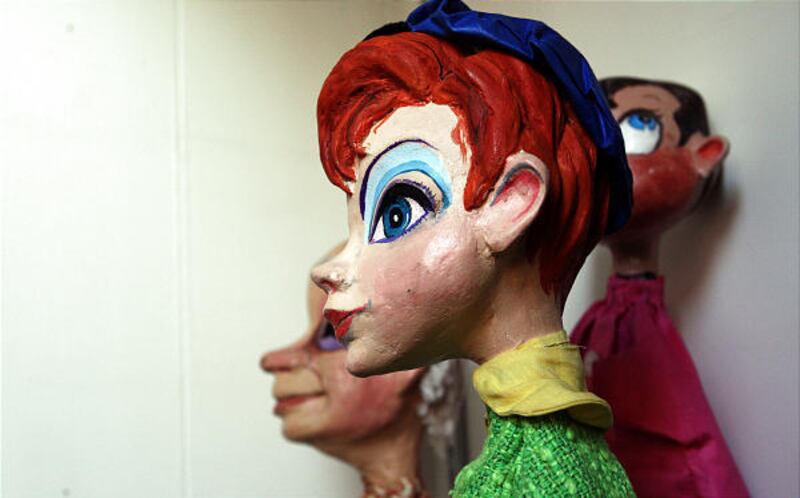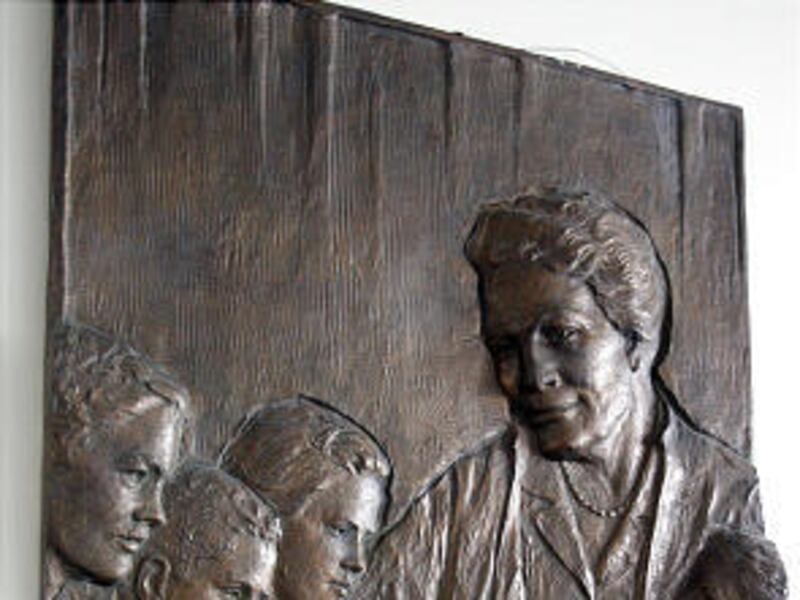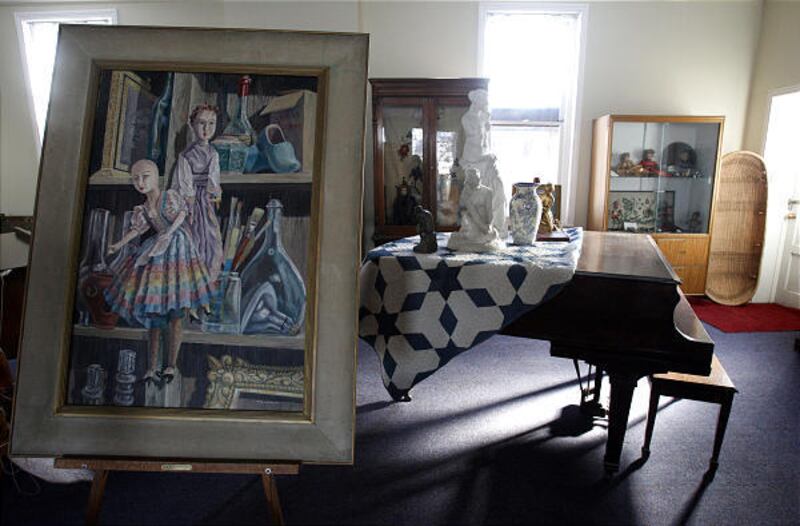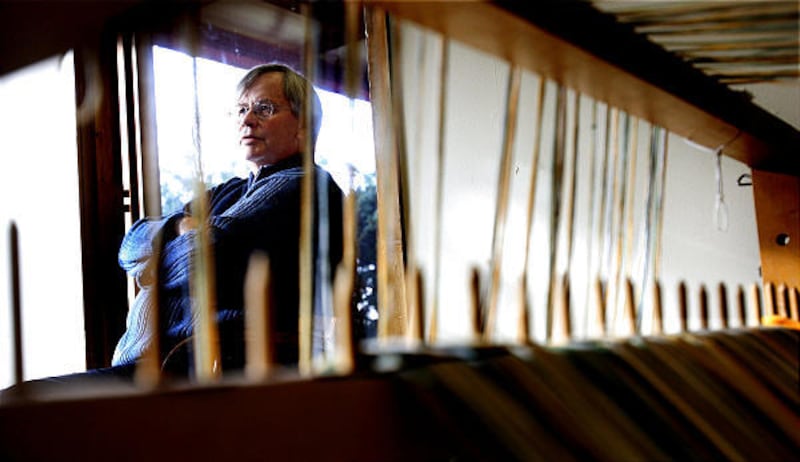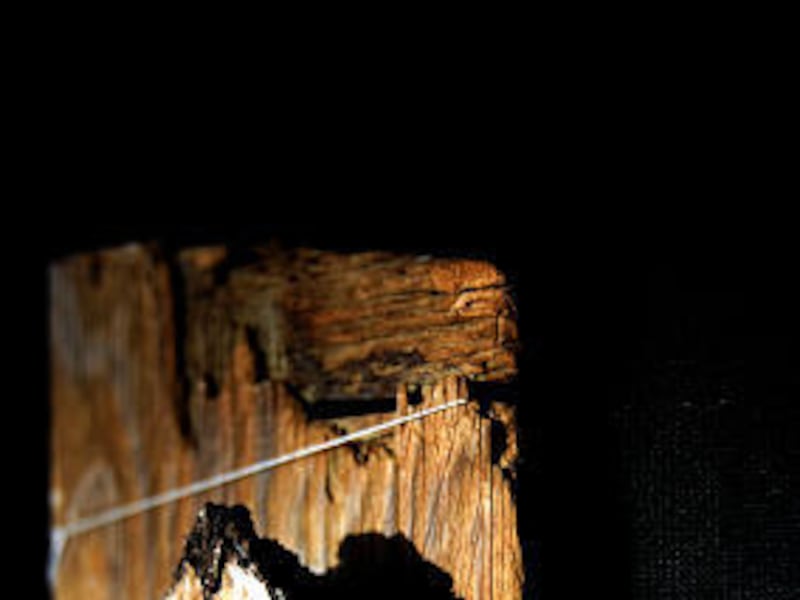"Come learn something old," invite the folks at the Pioneer Craft House. Old is not only fun, they say. Old is important; old is still worth considering; old should not be buried by new.
"We don't want to lose the old arts and crafts," says Jim Davis, a member of the Pioneer Craft House Executive Committee. Spinning, weaving, pottery, silversmithing, stained-glass making — they are not only creative and artistic and fun, they are an important part of who we are, he says. And, he adds, there could not be a better place to learn them.
If he had a choice of learning pottery in a sterile environment surrounded by modern glass and steel or in the basement in what used to be the gymnasium for Granite High School, there's no question which one he would pick. "This is such a homey, eclectic environment," he says. "There's such a spirit here, you can't help but be inspired. And we get the most eclectic group of people who come here to learn pottery. You come sit at these wheels, and life goes away."
Not only that, he says, but you will be in a place that has been a center of learning for more than 160 years. "Our site, our building is the oldest continuous operating school in Utah."
Pioneer Craft House is tucked away on the corner of 3300 South and 500 East in South Salt Lake, and its story began in 1847 with the arrival of the Mormon pioneers.
In 1847, after groups had settled the downtown areas, they sent others out to find and settle on the streams," says Davis. "Mill Creek runs through here, so a group came to settle. That first year they lived in mud huts and dugouts. But one of the first things they did was build an adobe building to serve as a church and school. It was located on this site."
In the 1880s, that adobe building was replaced by the brick one that still stands on the site. It was used as a church school, a territorial school, a county school, and in 1905 it became Granite High School. In the 1920s, additional acreage across the street was purchased by the Granite School District, which in those days extended from 2100 to 6200 South and from the Jordan River to the Wasatch Mountains, says Davis.
A new high school was built, but the old building was still used for shop and wood classes, and then as a junior high. But by the late 1940s, it had outlived that usefulness.
Enter Glenn Johnson Beeley. "Mrs. Beeley was the original recycler. She never threw anything away and was great at salvaging things no one else wanted," says Davis.
She also had a desire to establish a place where the pioneers could be honored and the crafts and skills they used to create a living in the valley could be taught to new generations. Through her hard work and vision, Pioneer Craft House was established and became a centennial gift to the people of Utah.
"She tenaciously went after resources," says Davis, who is also a former mayor of South Salt Lake. "When I was the mayor, she would come in and say, 'We need this and this, and we expect it to be delivered.' She did the same with Gov. Matheson, and Horace Sorenson, and the Hatch family. She had a lot of important people who were her backers. She wanted everyone in the state involved."
In the early years Auerbachs was a huge supporter, as were both the Sons and Daughter of Utah Pioneers organizations, which still are involved. In the 1950s, the annexes were added on to create more space for classes and artifacts. The complex now includes four buildings and a couple of courtyards.
Beeley arranged for cabinets to be donated from the State Capitol and the City-County Building, as well as pioneer looms and spinning wheels. Display cabinets came from Auerbachs. Chairs from old Fort Douglas.
One of Davis' favorite artifacts is an old wooden screen that Beeley glued back together and covered with aluminum foil. "Nothing went to waste," he says.
She also began to collect puppets, and over the years an extensive and important collection has been gathered: more than 500 in all, including some antique puppets from China. Some of the puppets are currently on display in the main building. The exhibit can be viewed by appointment or during the time the center is open for classes (mostly at night during the winter).
In the summer, puppet shows are part of the Farmers' Market and other celebrations. "It's so fun to watch the kids at those performances," says Davis. "The 3- and 4-year-olds are just mesmerized. Twenty-first century children think entertainment only comes out of a box."
The summer market, a Christmas fair and other seasonal celebrations are part of the latest incarnation of the Pioneer Craft House, which also includes a fresh lineup of classes.
About five years ago, "we were about out of business," says Davis. Beeley had died and things were languishing. The Granite School District had decided to sell the property. But a group of dedicated volunteers did not want to see Pioneer Craft House disappear. "Five or six of us put the board back together; the University of Utah came in with help in the education programs. South Salt Lake has been a key supporter."
In fact, Davis says, South Salt Lake and Salt Lake County now own the land, with Pioneer Craft House having long-term leases on the facilities.
A full roster of classes are being offered through the department of continuing education at the U. as well as by local experts.
"Our darkroom has been refurbished. We have one of the only darkrooms where the public can come develop black and white film," says Davis. "That is becoming a lost pioneer art."
The center is also becoming home to many of the local craft guilds: sewing, needlearts, spinning, lace and other groups, who hold monthly meetings there. They are also working with the Traditional Building Skills Institute in Ephraim to bring in some three-day workshops on such things as historic woodworking and metalwork.
It's a great place for all those things, he says, and they have great hopes and dreams for the future of Pioneer Craft House. "I think it is impossible to come here and not fall in love. The spirit of Mrs. Beeley catches you, and you are ours forever."
When Davis comes to Pioneer Craft House and sees the stately Sequoia trees in the courtyard (which really have no business growing here, he jokes) he can't help but think back when he went to Woodrow Elementary School. "There was a big tree on the east side, and our third grade teacher often took us on a walk to the tree where we sat on the ground and she read to us. I go to modern schools and think, where is the reading tree? That's what this place is all about. It's about not leaving the arts and culture behind as we move into the modern world. It's about remembering the people who sacrificed to build this place and make us who we are."
Upcoming craft classes
Pioneer Craft House offers a variety of classes including jewelry-making, sewing, stained glass, silk painting, fused glass, bead-making, photography, pottery, metalworking, mosaic tile, Ikebana and more.
Among classes that will be starting soon:
• Lost Wax Casting: making jewelry from wax castings. Tuesdays, Feb. 26-April 1, 6-9 p.m.
• Beginning Silversmithing: making jewelry from metal and stones, includes soldering and stone setting. Thursdays, March 13-May 1, 5-7 p.m.
• Lapidary: cutting, grinding and polishing stones to be used in jewelry. Thursdays, March 13-May 1, 7-9 p.m.
• Garden Stepping Stones: handmade stained-glass stepping stones for landscape use. Saturdays, March 1 and 8, 9 a.m.-noon,
• Mosaic Tiling: Learn to cut, adhere, grout and design with tile. Saturday, March 8, 9 a.m.-1 p.m.
• Continuing Mosaic Tiling: working on more advanced projects such as a garden bench or table top. Saturdays, March 29-April 12, 9:30 a.m.-1 p.m.,
• Introduction to Fine Jewelry — Fabrication: basic techniques, such as stamping, sawing, drilling, filing, soldering, used to make fine jewelry. Saturdays, March 15 and 22, 9:30 a.m.-1:30 p.m.
• Introduction to Fine Jewelry — Casting: techniques of carving molds and casting silver. Mondays, April 21-May 5, 6-9 p.m.
Class fees vary from around $49 to $150 plus special lab fees.
In addition to these, classes are planned but have not yet been scheduled on bird watching, thread and yarn painting, Ukrainian egg painting and knitting. For more information, a complete schedule, registration and fees, visit www.pioneercrafthouse.org.
And a museum, too
Over the years, the Pioneer Craft House has become home to many unusual bits and pieces of Western Americana, many of which are on display from time to time at the facility. Among the collection are:
• A spinning wheel once owned by Mahatma Gandhi, who used it as he urged people of India to spend 15 minutes each day to boost Indian prices for raw cotton.
• A piece of handmade carpet once used in the Salt Lake LDS Temple.
• The wedding dress worn by Clara Decker Young, one of the wives of Brigham Young.
• A loom used by the mother of Dr. John A. Widtsoe, along with a coat made of fabric woven on the loom.
• Murals painted for the Auerbach Company by Merrill Van Frank in 1947 in celebration of Utah's centennial year.
• A collection of paintings by early Utah artists, including Minerva Teichert, William Parkinson, Mable Frazer, J.T. Harwood and A.B. Wright and others.
• Chairs used by Col. Patrick Connor in his Fort Douglas office.
• A printing press used by Catholic Fathers in the early days of Utah, as well as a crimping machine used by the Catholic Sisters to iron their bonnets.
• A collection of puppets from around the work, some more than 100 years old.
• A Delft plate and a silver and pewter sacrament set used in Nauvoo, donated by LDS Church President and Mrs. George Albert Smith.
• Early Utah photographs and documents from the Herbert S. Auerbach collection.
• A bison sculpture by Avard Fairbanks.
E-mail: carma@desnews.com

